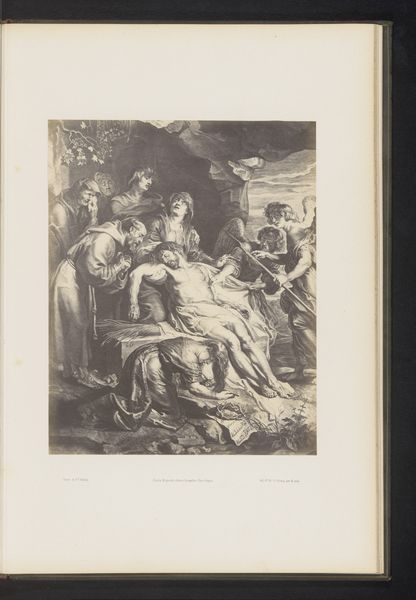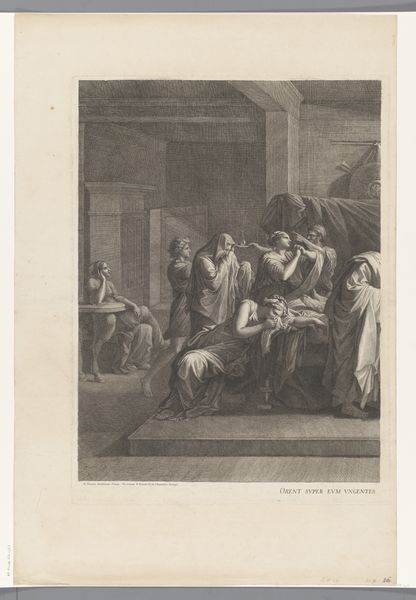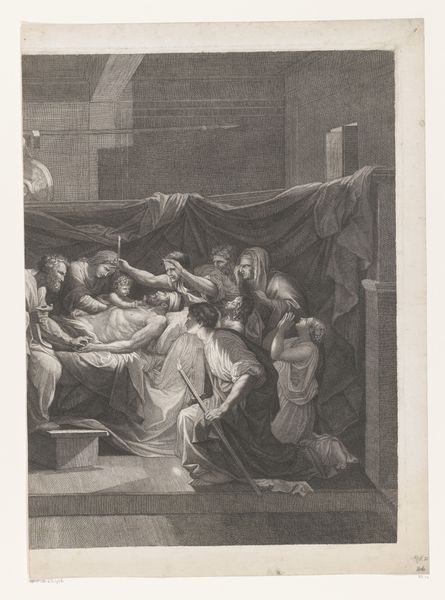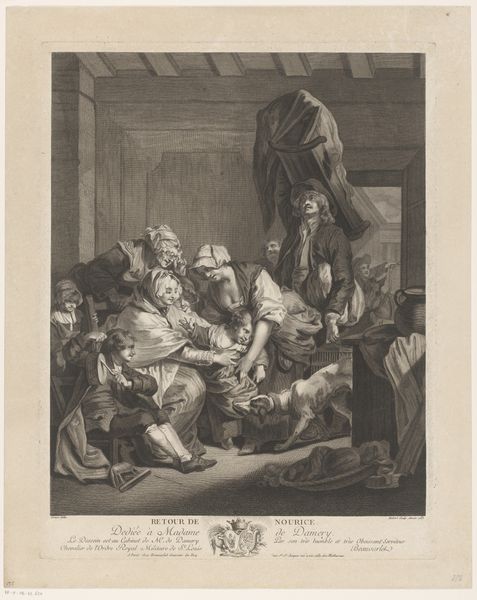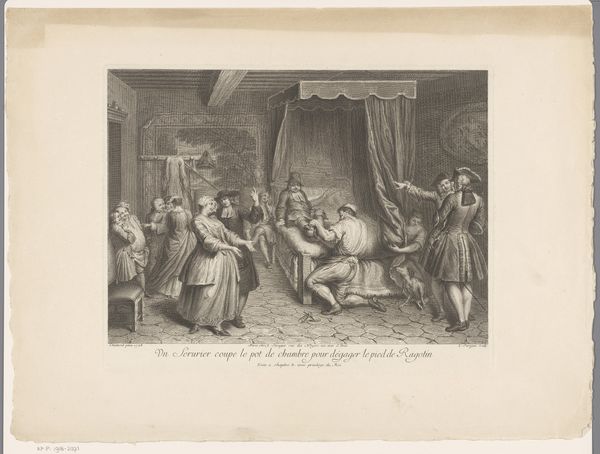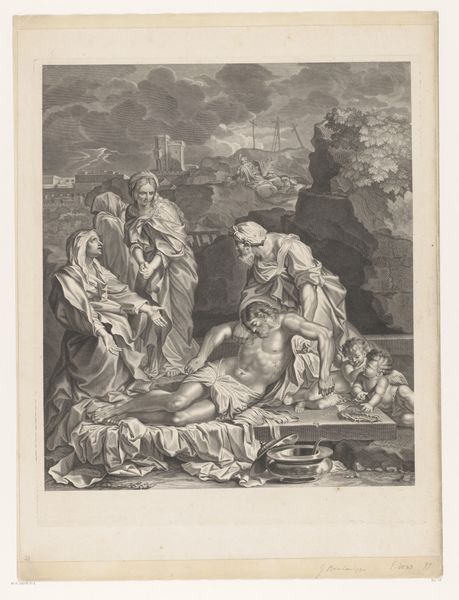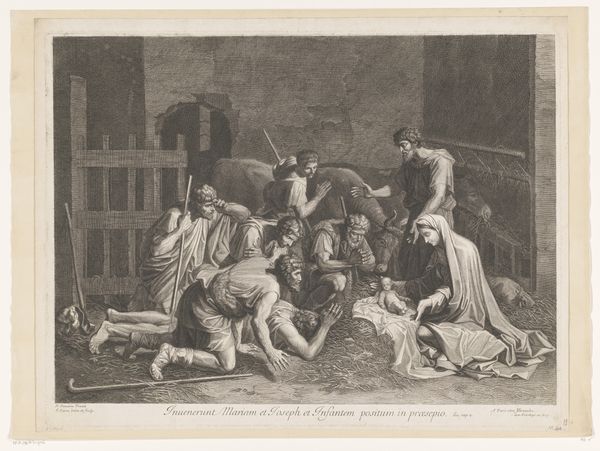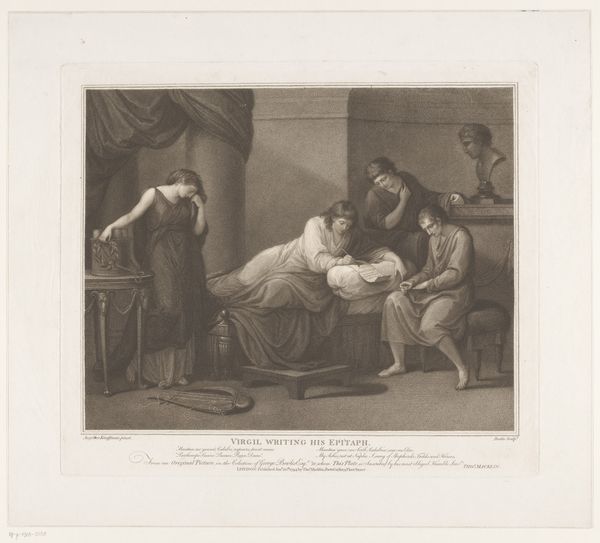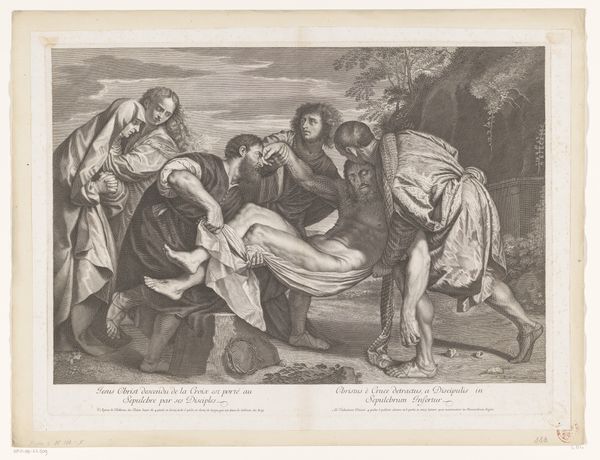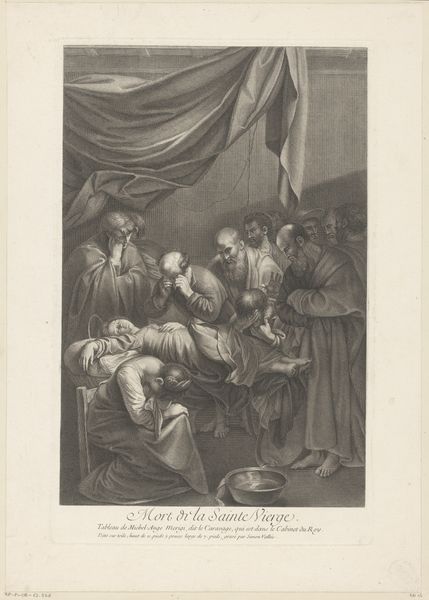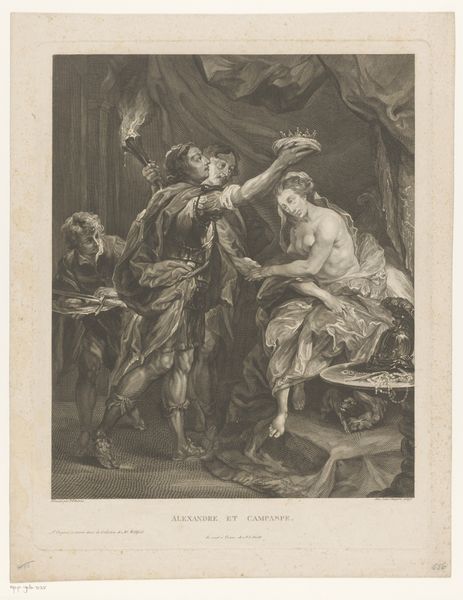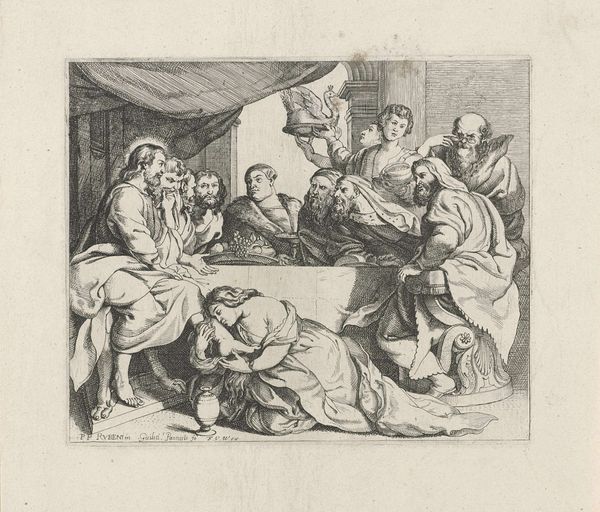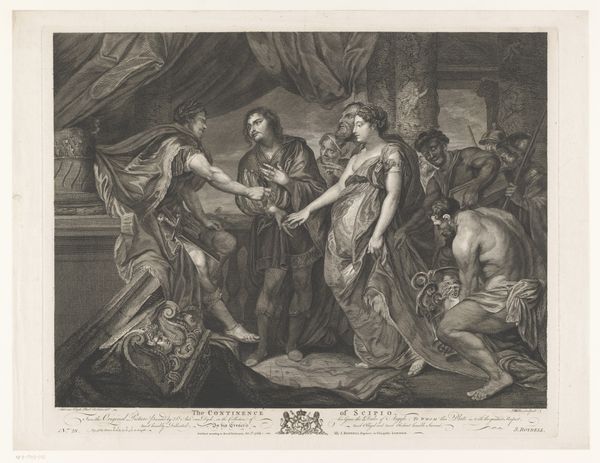
print, engraving
#
narrative-art
#
baroque
# print
#
old engraving style
#
figuration
#
line
#
history-painting
#
engraving
#
realism
Dimensions: height 354 mm, width 431 mm
Copyright: Rijks Museum: Open Domain
Jean-Baptiste Nolin created this print, titled 'Adoration of the Shepherds,' sometime between 1677 and 1725. It’s an engraving, a medium that allowed for wide distribution of images during that period. The image shows the Virgin Mary presenting the newborn Christ Child to a group of humble shepherds. In 17th-century France, religious imagery was used to reinforce social hierarchies. The shepherds, representing the common people, are shown in poses of reverence before the holy family. This underscores the importance of faith and obedience to both God and earthly authority. Nolin’s work reflects the conservative artistic standards promoted by institutions like the Académie Royale de Peinture et de Sculpture. This academy played a key role in shaping artistic taste and ensuring that art served the interests of the state and the church. As historians, we can examine parish records, royal decrees, and academic writings from this period to understand how art was used to shape social attitudes. The meaning of this image is contingent on understanding the social and institutional contexts in which it was made and consumed.
Comments
No comments
Be the first to comment and join the conversation on the ultimate creative platform.
